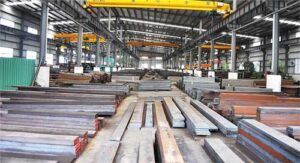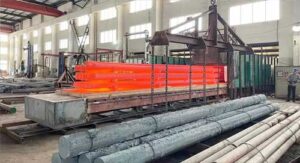Hot work tool steel is renowned for its exceptional heat resistance and toughness, making it indispensable in high-temperature industrial applications such as die casting, forging, and extrusion. However, these applications often involve abrasive wear, which can affect tooling and molds over time. To combat wear and extend the lifespan of hot work tool steel components, enhancing wear resistance is crucial. In this comprehensive article, we will explore various techniques and methods used to enhance the wear resistance of hot work tool steel, ensuring that it maintains its precision and durability even in the most demanding working environments.
1. Introduction
Wear resistance is a critical property for materials used in industries where abrasive wear is a common occurrence. Hot work tool steel, while prized for its heat resistance, may need additional enhancements to withstand the challenges posed by wear in various high-temperature applications.
2. Understanding Hot Work Tool Steel
Composition and Properties
Hot work tool steel is formulated with alloying elements like chromium, tungsten, molybdenum, and vanadium. These elements provide heat resistance, toughness, and initial wear resistance. However, further measures may be needed to enhance wear resistance.
Heat Resistance vs. Wear Resistance
While hot work tool steel excels in heat resistance, it may not inherently possess the same level of wear resistance. The focus is primarily on maintaining dimensional stability and hardness under high-temperature conditions.
3. Common Wear Mechanisms
Abrasive Wear
Abrasive wear occurs when hard particles or surfaces come into contact with the hot work tool steel, leading to the gradual removal of material.
Adhesive Wear
Adhesive wear takes place when two surfaces in contact experience a degree of material transfer, resulting in wear.
Erosive Wear
Erosive wear involves the removal of material due to the impact of abrasive particles propelled by a fluid.
Fretting Wear
Fretting wear occurs at the interface between two contacting surfaces that experience repeated relative motion, often in the presence of a lubricant.
4. Enhancing Wear Resistance
Surface Treatments
Surface treatments such as nitriding, carburizing, and ion implantation can modify the surface properties of hot work tool steel, increasing hardness and wear resistance.
Alloying Elements
Alloying elements like vanadium, niobium, and boron can be added to hot work tool steel to improve wear resistance without compromising other essential properties.
Coatings and Thin Films
The application of wear-resistant coatings and thin films can provide an extra layer of protection to hot work tool steel, enhancing its resistance to wear and abrasion.
5. Applications and Industries
Die Casting
Die casting applications involve high-pressure and high-temperature environments. Enhancing wear resistance in hot work tool steel molds ensures consistent part quality and longevity.
Forging
Forging processes subject hot work tool steel to extreme conditions. Improved wear resistance extends the lifespan of forging dies and maintains precision.
Extrusion
Extrusion tooling operates under high stress and temperature. Hot work tool steel with enhanced wear resistance ensures dimensional stability and extended tool life.
Plastic Molding
In plastic molding, wear resistance is crucial for maintaining the precision and longevity of molds used in injection molding and other processes.
6. Challenges and Considerations
Balancing Wear Resistance and Other Properties
Enhancing wear resistance should not come at the expense of other crucial properties like heat resistance and toughness. Achieving the right balance is essential.
Maintenance and Inspection
Regular maintenance and inspection of hot work tool steel components are vital to monitor wear and ensure that the enhanced wear resistance measures remain effective.
7. FAQs
Frequently Asked Questions About Enhancing Wear Resistance in Hot Work Tool Steel
Q1. Can hot work tool steel be inherently wear-resistant without additional treatments?
Hot work tool steel possesses some level of wear resistance due to its alloy composition. However, in highly abrasive environments, additional treatments or alloying may be necessary to enhance wear resistance.
Q2. What is the typical lifespan extension achieved by enhancing wear resistance in hot work tool steel?
The lifespan extension varies depending on the specific enhancements and applications. In some cases, wear resistance improvements can significantly extend the lifespan of hot work tool steel components.

